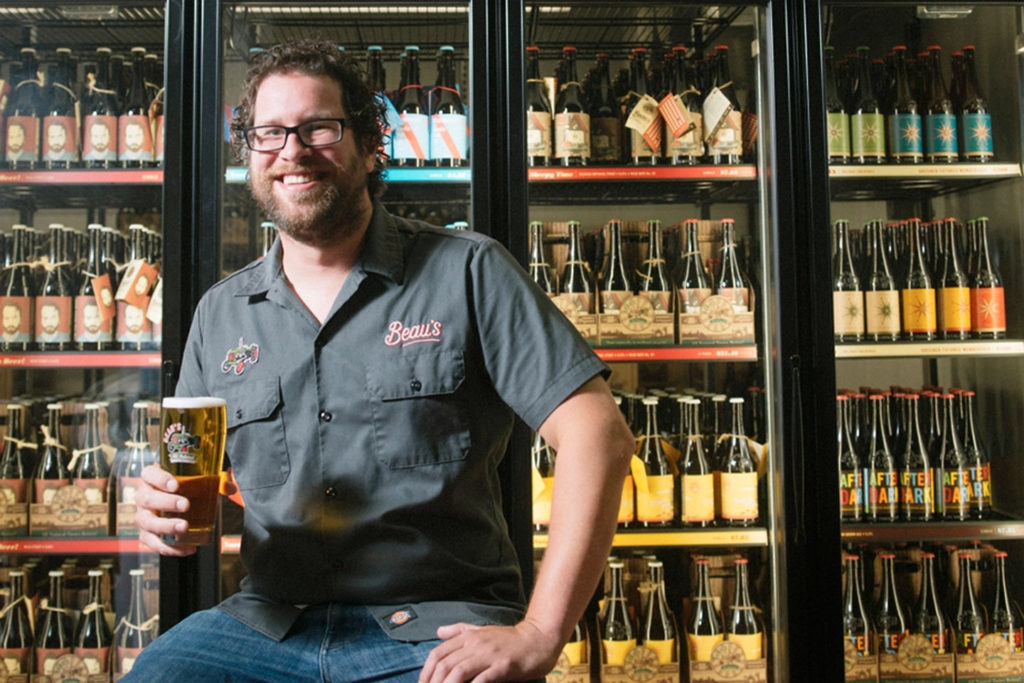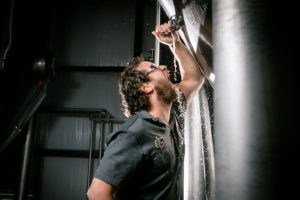
by Tracey Lindeman
Published in the Globe and Mail on July. 14, 2016
With more than 500-per-cent revenue growth over the past five years, and five million litres of beer sold in 2015, Beau’s Brewery has built a strong foothold in Ontario and Quebec. Now the craft brewer from Vankleek Hill, a tiny eastern Ontario town between Ottawa and Montreal, is embarking on an ambitious plan to break out of the regional market and distribute across the country.
“We’re not expecting lots of sales in the far-flung regions of the country, but I think it’s important for us at this point to have that national coverage,” said Beau’s founder and CEO Steve Beauchesne.
Beau’s flagship Lug-Tread, a lagered ale, and a few of its 50 rotating craft brews will pop up across Canada throughout the remainder of 2016, beginning with Prince Edward Island and New Brunswick this week and Manitoba next week. British Columbia and Alberta will follow later in the month.
Mr. Beauchesne said those provinces were chosen first simply because their interprovincial trade processes moved fastest. Canada’s patchwork of provincial liquor laws and trade barriers means Beau’s has to apply to each province and territory for sales authorization. Some permits took just a few months, while others have been more difficult to obtain.
Beau’s original distribution model was to only sell beer to places within a day’s drive. Under that model, it began selling in Quebec in early 2015. It took three attempts over eight years and $100,000 – mostly consultant and legal fees and the cost of establishing a regional distribution warehouse – in order to get sales approval from Quebec’s liquor control board.
The decision to nationalize distribution was partly inspired by Labatt’s acquisition of Mill Street Brewery, Mr. Beauchesne said. Labatt is a division of multinational AB InBev, which is in the process of merging with SABMiller to create the world’s largest beer company, with a 30 per cent global market share.
Other recent events, including Molson Coors’s craft beer division taking a minority stake in the Brasseur de Montréal microbrewery and Labatt’s acquisition of Microbrasserie Archibald, further stoked Beau’s fear that craft beer makers would be swallowed up by the big boys.
“If you allow those large breweries to take over craft beer, the same thing’s going to happen– we’re going to end up with watery, light lagers.”
That Molson and Labatt – which together control almost 60 per cent of the Canadian market – are acquiring craft breweries isn’t surprising, said Alan Middleton, a marketing professor and brand expert at York University’s Schulich School of Business. It’s an easy way to protect one’s base and cash in on craft beer, currently the only beer market on the rise in Canada.
The presence of major players in the craft-brewing scene puts significant pressure on smaller breweries’ resolve and ability to stay independent, and could dilute the hype surrounding craft beer.

“The biggest risk facing craft beer is commoditization,” Mr. Beauchesne said. “The whole craft-brewing movement grew up as a response, or counterculture, to mainstream beer. If you allow those large breweries to take over craft beer, the same thing’s going to happen – we’re going to end up with watery, light lagers.
“It’s important for us to join the handful of other Canadian brewers that do distribute across the country, so together we can put together a stronger voice for craft beer and reinforce the idea that craft beer needs to be independent,” he continued.
Beau’s was founded when Steve’s father Tim Beauchesne approached him about opening a brewery. Tim’s textile factory, which was on its last legs, was converted into the brewery. The company, which recently announced an ownership change to remain independent, now employs 160 people.
Crystal Luxmore, a certified beer expert and owner of Experience Beer, said the fact that the company’s beer is organic could serve Beau’s well. “That [organic] niche will get them far,” Ms. Luxmore said.
Introducing Beau’s products to the broader Canadian market will be challenging. On the plus side, Beau’s long-neck bottle and striking label artwork help its bottles stand out on store shelves. “Beau’s is one of the only craft brewers that has its own art department,” Ms. Luxmore pointed out.
However, many craft beer lovers tend to support breweries in their region, for both freshness and local pride. Beau’s has a loyal following in Ontario and Quebec – it expects 35 per cent growth in those markets in 2016 – partly because the it holds events at its Vankleek Hill brewery, as well as in Montreal and throughout Ontario. “They’ll have to make a meaningful connection with people [in other markets] to get them to pick up the bottles time and time again,” Ms. Luxmore said.
Although sales have been growing rapidly, craft beer’s share of the Canadian market is still less than 10 per cent. Winning over fans, particularly in craft beer-loving British Columbia, will require a fine balance between marketing and brand authenticity, said Mr. Middleton, adding: “It’s going to be a challenge, it really is.”